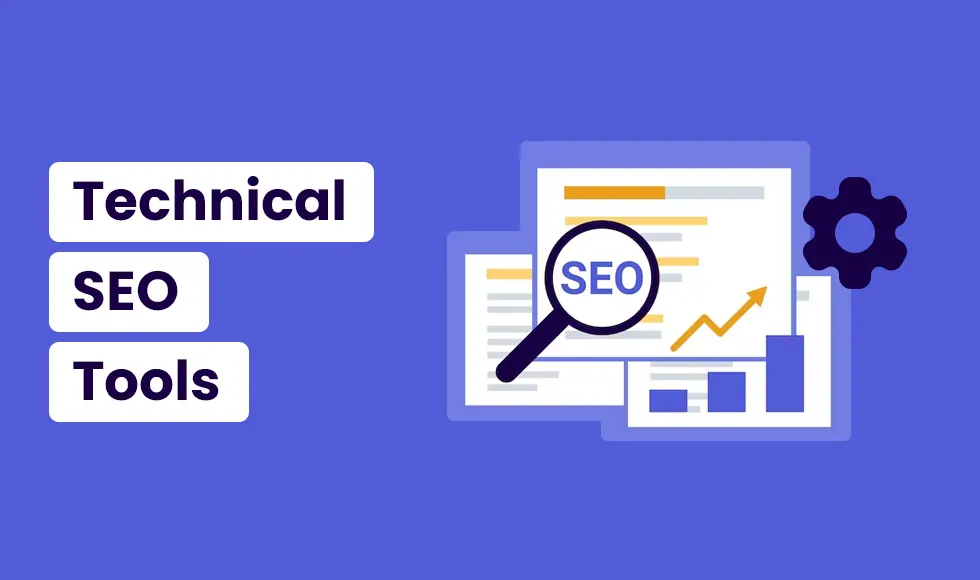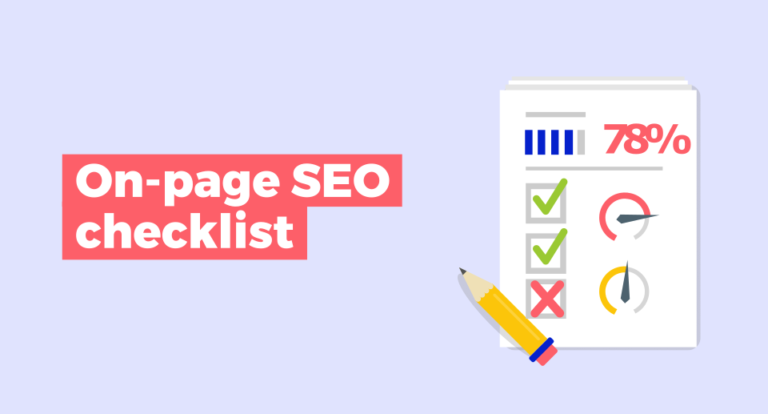Why Is Technical SEO Important? Explained
In the ever-evolving landscape of digital marketing, staying ahead of the competition requires more than just compelling content and an aesthetically pleasing website. Enter Technical SEO – the unsung hero that ensures your website not only gets noticed by search engines but also ranks higher and performs optimally. Guided by the principles of Semantic/Holistic SEO as championed by Koray Tuğberk GÜBÜR, this article delves into the significance of Technical SEO, explaining why is technical seo important crucial for your website’s success and how you can leverage it to boost your online presence.
Understanding Technical SEO
Technical SEO refers to the optimization of your website’s infrastructure to ensure that search engines can crawl and index it effectively. While on-page SEO focuses on optimizing individual pages with keywords, meta tags, and high-quality content, and off-page SEO centers on building backlinks and social signals, technical SEO is all about the behind-the-scenes elements that impact your site’s performance and visibility.

What is Technical SEO?
Technical SEO encompasses a range of practices aimed at improving the technical aspects of a website. This includes optimizing site speed, ensuring mobile-friendliness, enhancing site architecture, implementing structured data, and fixing crawl errors. By addressing these factors, you create a solid foundation that makes it easier for search engines to understand and rank your site.
Key Components of Technical SEO
- Site Speed: Faster websites provide a better user experience and are favored by search engines.
- Mobile-Friendliness: With the majority of users accessing websites via mobile devices, ensuring your site is mobile-friendly is crucial.
- Site Architecture: A well-organized site structure helps search engines crawl and index your pages more efficiently.
- Structured Data: Implementing schema markup helps search engines understand the content and context of your pages.
- Crawl Errors: Identifying and fixing crawl errors ensures that search engines can properly access all your site’s content.

How Does Technical SEO Differ from On-Page and Off-Page SEO?
On-Page SEO involves optimizing elements within your website’s content. This includes keyword usage, meta descriptions, title tags, headers, and internal linking. The goal is to make your content relevant and engaging for both users and search engines.
Off-Page SEO, on the other hand, focuses on building your website’s reputation and authority through external means. This primarily involves acquiring high-quality backlinks from other reputable websites, social media marketing, and influencer outreach. The aim is to boost your site’s credibility and visibility across the web.
Technical SEO is distinct because it deals with the underlying structure and technical framework of your website. It’s not about the content itself but rather about ensuring that search engines can access, crawl, interpret, and index that content without any issues. Think of technical SEO as the foundation of a house; without a strong foundation, no amount of interior decorating (on-page SEO) or curb appeal (off-page SEO) will keep the house standing.


Technical SEO vs. On-Page SEO
Key Differences and Roles
Technical SEO and On-Page SEO both play crucial roles in your website’s optimization strategy, but they focus on different aspects:
| Aspect | Technical SEO | On-Page SEO |
|---|---|---|
| Focus | Underlying website infrastructure | Content and individual web page elements |
| Main Goal | Ensuring search engines can crawl and index your site effectively | Enhancing the relevance and user experience of web pages |
| Key Elements |
|
|
Roles and Benefits
While Technical SEO lays the foundation for a well-functioning website, On-Page SEO builds upon that foundation by ensuring the content is relevant and engaging for both users and search engines. Together, they create a comprehensive SEO strategy that enhances visibility, usability, and ranking potential.

Technical SEO vs. Off-Page SEO
Key Differences and Roles
Technical SEO and Off-Page SEO are distinct in their approaches and focus areas:
| Aspect | Technical SEO | Off-Page SEO |
|---|---|---|
| Focus | Website infrastructure and backend optimization | Building website authority and reputation externally |
| Main Goal | Creating a technically sound website that search engines can easily access and index | Enhancing the credibility and popularity of your website through external signals |
| Key Elements |
|
|
Roles and Benefits
Technical SEO ensures your website is well-structured and accessible, providing a solid base for search engines to understand and rank your site. Off-Page SEO, on the other hand, works to boost your site’s authority and trustworthiness through external endorsements and backlinks. Both are essential for a holistic SEO strategy, each contributing to your website’s overall success in different ways.
Why Technical SEO Is Crucial
Technical SEO is the backbone of your website’s overall SEO strategy. Without a solid technical foundation, even the best content can fail to achieve its full potential. Here are the key reasons why Technical SEO is essential for website performance and search engine visibility:
- 1. Improved Crawlability and Indexability Search engines like Google use bots to crawl and index websites. Technical SEO ensures that these bots can easily access, understand, and index your content. By optimizing your site’s architecture, fixing crawl errors, and using proper URL structures, you make it easier for search engines to navigate your site. This means more of your pages get indexed, increasing your chances of ranking higher in search results.
- 2. Enhanced Site Speed Page speed is a critical ranking factor for search engines. A faster website provides a better user experience, leading to lower bounce rates and higher engagement. Technical SEO involves optimizing elements like image sizes, server response times, and code efficiency to ensure your site loads quickly. This not only improves user satisfaction but also positively impacts your search engine rankings.
- 3. Mobile-Friendliness With the majority of internet users accessing websites via mobile devices, having a mobile-friendly site is no longer optional. Technical SEO ensures your site is responsive and provides a seamless experience across all devices. Google’s mobile-first indexing means that the mobile version of your site is considered the primary version, making mobile optimization crucial for visibility and ranking.
- 4. Secure Browsing (HTTPS) Security is a top priority for both users and search engines. Implementing HTTPS (Hypertext Transfer Protocol Secure) through SSL (Secure Sockets Layer) certificates ensures that data exchanged between your site and its users is encrypted and secure. Google gives preference to secure sites, so having HTTPS is not just about protecting your users but also about improving your search engine ranking.
- 5. Structured Data Implementation Structured data, or schema markup, helps search engines understand the content and context of your pages. By providing additional information about your content, you can enhance your search listings with rich snippets, such as star ratings, product prices, and event details. This not only makes your listings more attractive to users but also increases click-through rates and visibility.
- 6. Reduced Duplicate Content Duplicate content can confuse search engines and dilute your rankings. Technical SEO practices like canonical tags, 301 redirects, and proper URL structures help manage and eliminate duplicate content issues. This ensures that search engines understand which version of a page to index, improving your site’s overall search performance.
- 7. Better User Experience (UX) A technically optimized website provides a smoother and more enjoyable experience for users. Elements like fast loading times, easy navigation, mobile responsiveness, and secure connections contribute to a positive UX. When users have a good experience on your site, they are more likely to stay longer, interact more, and return in the future. Search engines take user experience signals into account, so a better UX can lead to higher rankings.
- 8. Competitive Advantage In the highly competitive digital landscape, staying ahead of your rivals requires a robust SEO strategy. Many websites focus heavily on content and backlinks but neglect the technical aspects. By prioritizing Technical SEO, you can gain a competitive edge, ensuring your site is more accessible, faster, and more reliable than those of your competitors.
Enhancing Crawlability
Technical SEO plays a pivotal role in improving the crawlability of your website. Crawlability refers to the ease with which search engine bots can discover and navigate your site’s pages. When your site is easily crawlable, search engines can index your content more effectively, leading to better visibility in search results.

Optimizing Robots.txt
The robots.txt file is a simple text file placed in the root directory of your website that provides instructions to search engine crawlers about which pages or sections they can and cannot crawl. Properly optimizing your robots.txt file is crucial for managing crawler traffic and preventing search engines from indexing pages that aren’t relevant or necessary.
Best Practices for Optimizing Robots.txt:
- Allow Important Pages: Ensure that essential pages and sections of your site are accessible to crawlers.
- Block Irrelevant Pages: Prevent crawlers from accessing low-value or duplicate content, such as admin pages, login screens, and certain scripts.
- Specify Sitemap Location: Include the location of your XML sitemap within the robots.txt file to guide crawlers more efficiently.
Example of an optimized robots.txt file:
Creating an XML Sitemap
An XML sitemap is a file that lists all the important pages on your website, providing search engines with a roadmap to follow. This helps ensure that all critical pages are discovered and indexed, even if your site’s navigation structure is complex.
Importance of an XML Sitemap:
- Improved Indexing: Ensures that search engines can find and index all key pages, particularly those that may not be easily discoverable through internal links.
- Priority and Update Frequency: Allows you to assign priority levels and indicate how frequently pages are updated, helping search engines understand which pages are most important and when they should be re-crawled.
- Error Reporting: Helps identify and fix potential issues, such as broken links or misconfigured pages, that might hinder crawlability.
Steps to Create an XML Sitemap:
- Generate the Sitemap: Use tools like Yoast SEO, Google XML Sitemaps, or online sitemap generators to create your sitemap.
- Submit to Search Engines: Submit your XML sitemap to Google Search Console and Bing Webmaster Tools to inform search engines about its location.
- Update Regularly: Ensure that your sitemap is updated whenever you add or remove pages to keep it current.
Example of an XML sitemap:
Improving Site Speed
Site speed is a critical factor in both user experience and search engine rankings. A fast-loading website not only keeps visitors engaged but also signals to search engines that your site is well-optimized, which can lead to higher rankings.
The Impact of Site Speed
- User Experience: Visitors expect web pages to load quickly. Slow load times can lead to high bounce rates, lower engagement, and reduced conversions. A fast site enhances user satisfaction and encourages visitors to stay longer and explore more content.
- Search Engine Rankings: Google considers page speed as a ranking factor. Faster sites are more likely to rank higher in search results, giving them a competitive edge. Improving site speed can directly impact your site’s visibility and traffic.
Reducing Page Load Time
Reducing page load time is a key aspect of technical SEO. Here are some effective techniques to enhance site speed:

- Optimize Images:
- Compress Images: Use tools like TinyPNG or ImageOptim to reduce the file size of images without compromising quality.
- Use Proper Formats: Utilize modern image formats like WebP that offer better compression and quality than traditional formats like JPEG and PNG.
- Lazy Loading: Implement lazy loading to defer the loading of off-screen images until the user scrolls to them.
- Minify CSS, JavaScript, and HTML:
- Remove Unnecessary Characters: Minify files by removing whitespace, comments, and unused code to reduce their size and improve load times.
- Combine Files: Consolidate multiple CSS and JavaScript files into single files to reduce the number of HTTP requests.
- Enable Compression:
- Gzip Compression: Enable Gzip compression on your server to reduce the size of HTML, CSS, and JavaScript files, making them faster to download.
- Reduce Server Response Time:
- Choose a Fast Hosting Provider: Select a reliable hosting provider with optimized servers.
- Content Delivery Network (CDN): Use a CDN to distribute your content across multiple servers worldwide, reducing latency and improving load times for users globally.
- Optimize Website Code:
- Asynchronous Loading: Load JavaScript files asynchronously to prevent them from blocking the rendering of the page.
- Eliminate Render-Blocking Resources: Identify and eliminate resources that block the rendering of the page content.
Leveraging Browser Caching
Browser caching allows web browsers to store copies of your site’s static files, such as images, CSS, and JavaScript, on a visitor’s device. This way, when they revisit your site, the browser can load these files from the cache rather than downloading them again, significantly improving page load speed.

How to Leverage Browser Caching:
- Set Expiry Headers:
- Configure Expiry Times: Use HTTP headers to set expiration times for different types of files. For instance, you can cache images for a longer period (e.g., one month) while keeping HTML files’ cache duration shorter (e.g., one day).
- Use .htaccess File (for Apache Servers):
- Configure Caching Rules: Add caching rules to your .htaccess file to specify how long browsers should cache various file types.
Implement Cache-Control Headers (for Nginx Servers):
- Set Cache-Control Directives: Use Cache-Control headers to define how, and for how long, browsers should cache your files.
Example Nginx configuration:
Ensuring Mobile-Friendliness
Mobile-friendliness is a critical aspect of SEO, given the increasing number of users accessing the web through mobile devices. A mobile-friendly website not only enhances user experience but also boosts search engine rankings due to Google’s mobile-first indexing.

Importance of Mobile-Friendliness for SEO
- User Experience: Mobile users expect a seamless browsing experience. A site that is difficult to navigate on a mobile device can lead to high bounce rates and low engagement.
- Search Engine Rankings: Google’s mobile-first indexing means that the mobile version of your site is considered the primary version. A mobile-friendly site is more likely to rank higher in search results.
- Increased Traffic: With the majority of web traffic coming from mobile devices, ensuring your site is optimized for mobile can significantly increase your reach and user base.
Implementing Responsive Design
Responsive design ensures that your website adapts to different screen sizes and devices, providing a consistent and user-friendly experience. Here are best practices for implementing responsive design:

- Fluid Grids:
- Use a flexible grid-based layout that uses relative units like percentages instead of fixed units like pixels. This allows your site to adjust to various screen sizes.
- Flexible Images:
- Ensure that images are scalable and can adjust within the constraints of a fluid grid. Use CSS to set a maximum width of 100% for images to prevent them from overflowing their containers.
- Media Queries:
- Implement CSS media queries to apply different styles based on the device’s characteristics, such as screen width, height, and resolution. This allows you to tailor the design and layout for various devices.
- Responsive Typography:
- Use relative units like em or rem for font sizes, ensuring that text scales appropriately on different devices.
- Touch-Friendly Navigation:
- Design navigation elements to be easily accessible on touchscreens. This includes using larger buttons, ensuring adequate spacing, and avoiding hover-dependent interactions.
Optimizing for Mobile Speed
Optimizing site speed for mobile devices is crucial, as mobile users often have slower internet connections compared to desktop users. Here are techniques for enhancing mobile speed:

- Enable Accelerated Mobile Pages (AMP):
- Implement AMP to create lightweight and fast-loading mobile pages. AMP pages are designed to load almost instantly, providing a better user experience.
- Optimize Images for Mobile:
- Use responsive images with appropriate sizes and resolutions for different devices. Implement image compression and next-gen formats like WebP to reduce load times.
- Minimize Redirects:
- Reduce the number of redirects on your site to minimize additional HTTP requests, which can slow down page load times on mobile devices.
- Prioritize Above-the-Fold Content:
- Ensure that the content visible above the fold loads quickly. Defer the loading of non-critical resources and use techniques like lazy loading for below-the-fold content.
- Use Mobile-Friendly Plugins:
- If your site relies on plugins, ensure they are optimized for mobile performance. Avoid using heavy or outdated plugins that can slow down your site.
- Optimize CSS and JavaScript:
- Minify and inline critical CSS to reduce render-blocking resources. Defer non-essential JavaScript to improve initial page load speed.
- Leverage Browser Caching:
- Set appropriate caching headers to store static resources on the user’s device, reducing load times for returning visitors.
Enhancing Security with HTTPS
HTTPS (Hypertext Transfer Protocol Secure) is the secure version of HTTP, the protocol used for transmitting data between a user’s browser and the website they are visiting. HTTPS encrypts this data, providing a secure connection that protects sensitive information from being intercepted by malicious parties.

Impact on SEO:
- Ranking Signal: Google has confirmed that HTTPS is a ranking signal. Websites using HTTPS are more likely to rank higher in search results compared to their non-secure counterparts.
- Trust and Credibility: HTTPS builds trust with users by ensuring their data is secure. This can lead to higher engagement and conversion rates.
- Referral Data: When traffic passes to an HTTPS site, the referral data is preserved, which can improve the accuracy of your analytics.
Implementing HTTPS
To protect user data and improve your website’s rankings, follow these steps to implement HTTPS:
- Purchase an SSL/TLS Certificate: Buy an SSL/TLS certificate from a trusted Certificate Authority (CA). There are various types of certificates available, from basic single-domain certificates to wildcard and multi-domain certificates, depending on your needs.
- Install the Certificate: Install the SSL/TLS certificate on your web server. The installation process varies depending on your hosting provider and server type. Most hosting providers offer step-by-step guides or customer support to assist with installation.
- Update Your Website Links: Change all internal links, images, scripts, and other resources to use HTTPS. This includes updating absolute URLs and ensuring all content is loaded securely.
- Set Up 301 Redirects: Implement 301 redirects from HTTP to HTTPS to ensure users and search engines are automatically directed to the secure version of your site. This helps preserve your search rankings and ensures a seamless user experience.

Example of a 301 redirect configuration in .htaccess (for Apache servers):
- Update Your Sitemap: Update your XML sitemap to include HTTPS URLs and submit it to search engines via Google Search Console and Bing Webmaster Tools.
- Check for Mixed Content: Ensure that all resources on your website (images, scripts, stylesheets) are loaded over HTTPS. Mixed content, where a secure page loads insecure resources, can cause security warnings and degrade user trust.
Ensuring Certificate Validity
Maintaining the validity of your SSL/TLS certificate is crucial to avoid security warnings and ensure continuous protection for your website:
- Monitor Expiry Dates: Keep track of your certificate’s expiry date and renew it before it expires. Most certificates need to be renewed annually, but some providers offer multi-year options.
- Automate Renewal: Use automated renewal tools if your hosting provider supports them. This ensures that your certificate is renewed without manual intervention, reducing the risk of expiry.
- Check Certificate Configuration: Regularly verify that your SSL/TLS certificate is correctly installed and configured. Tools like SSL Labs’ SSL Test can help you check your certificate’s status and identify potential issues.
- Implement HSTS HTTP Strict Transport Security (HSTS) is a security policy mechanism that helps protect HTTPS websites against downgrade attacks and cookie hijacking. It ensures that browsers only communicate with your site over HTTPS.
Example of an HSTS configuration in .htaccess:
Fixing Broken Links
Broken links can negatively impact user experience and SEO. Users encountering broken links may leave your site in frustration, while search engines see them as a sign of poor site maintenance. Technical SEO helps in identifying and fixing these broken links to ensure a smooth user experience and maintain your site’s credibility.

How Technical SEO Helps Identify and Fix Broken Links
- Crawl Analysis:
- Regularly crawling your website helps identify broken links. Technical SEO involves using tools to perform comprehensive site audits, uncovering any broken links that need fixing.
- Redirects:
- Setting up proper redirects ensures that users and search engines are directed to relevant, functioning pages instead of encountering dead ends. This preserves link equity and improves the user experience.
Tools for Finding Broken Links
Several tools can help you find and fix broken links on your website:
- Google Search Console:
- Provides detailed reports on crawl errors, including broken links. Navigate to the Coverage report to see any detected issues.
- Screaming Frog SEO Spider:
- A powerful desktop program that crawls your website to identify broken links, server errors, and other SEO issues.
- Ahrefs Site Audit:
- A comprehensive tool that audits your site and identifies broken links, among other SEO issues.
- SEMrush Site Audit:
- Similar to Ahrefs, SEMrush provides in-depth site audit reports, highlighting broken links and other critical issues.
- Broken Link Checker:
- A simple online tool that scans your website for broken links and provides a report for easy fixing.

Best Practices for Handling 404 Errors
Handling 404 errors properly is crucial for maintaining a positive user experience and preserving your site’s SEO integrity. Here are some best practices:
- Create Custom 404 Pages:
- Design a user-friendly 404 page that helps visitors find what they’re looking for. Include navigation links, a search bar, and a friendly message to guide users back to functional parts of your site.
Oops! Page Not Found
It looks like the page you’re looking for doesn’t exist. Here are some helpful links to get you back on track:
Set Up 301 Redirects:
- Redirect users from broken links to relevant, working pages using 301 redirects. This helps maintain the user experience and retains the link equity from the old URLs.
Example of a 301 redirect in .htaccess (for Apache servers):
Redirect 301 /old-page https://www.yourwebsite.com/new-page- Regularly Monitor and Fix Broken Links:
- Use the tools mentioned above to perform regular audits of your site and fix broken links promptly. Keeping an eye on your site’s health ensures that users and search engines have a seamless experience.
- Update Internal Links:
- When content is moved or URLs are changed, update internal links to point to the new locations. This prevents internal broken links and ensures that users can navigate your site easily.
- Inform Users:
- If a popular page has been moved or removed, inform users through announcements or blog posts, and provide links to the new or related content.
By identifying and fixing broken links, using the right tools, and following best practices for handling 404 errors, you can improve user experience and maintain a healthy SEO profile.
Improving Site Architecture
A well-organized site architecture is fundamental for both SEO and user experience. It helps search engines understand the structure of your site and ensures that users can easily find the information they are looking for.
The Importance of a Well-Organized Site Architecture
- Enhanced Crawlability: A clear site structure allows search engine bots to crawl and index your website more efficiently. This ensures that all important pages are discovered and ranked.
- Improved User Experience: Users can navigate a well-organized site more easily, finding relevant content quickly and reducing bounce rates.
- Keyword Relevance: Grouping related content together and using appropriate internal linking helps reinforce keyword themes, improving your chances of ranking for those terms.
Creating a Logical URL Structure
A logical and SEO-friendly URL structure is vital for both search engines and users. It provides clarity about the content of the page and its place within the site hierarchy.
Best Practices for Creating a Logical and SEO-Friendly URL Structure
- Use Descriptive Keywords:
- Include relevant keywords in your URLs to give both users and search engines a clear idea of the page content.
- Example:
https://www.example.com/seo-tips/technical-seo
- Keep URLs Short and Simple:
- Shorter URLs are easier to read, remember, and share. Avoid unnecessary words and characters.
- Example:
https://www.example.com/contact-usinstead ofhttps://www.example.com/index.php?page=contact_us&id=123
- Use Hyphens to Separate Words:
- Use hyphens (-) rather than underscores (_) to separate words in URLs. Search engines recognize hyphens as word separators.
- Example:
https://www.example.com/seo-tips/technical-seoinstead ofhttps://www.example.com/seo_tips/technical_seo
- Maintain a Consistent Structure:
- Ensure consistency in your URL structure by following a logical hierarchy. For example, group similar content under appropriate categories.
- Example:
https://www.example.com/blog/seo/for SEO-related blog posts.
- Avoid Dynamic Parameters:
- Use static URLs instead of dynamic ones with parameters. Static URLs are cleaner and more SEO-friendly.
- Example:
https://www.example.com/products/shoesinstead ofhttps://www.example.com/products.php?id=123&type=shoes
Utilizing Breadcrumbs
Breadcrumbs are navigational aids that show users their location within the site’s hierarchy. They improve site navigation and help search engines understand the structure and hierarchy of your site.
How Breadcrumbs Improve Site Navigation and SEO
- Enhanced User Navigation:
- Breadcrumbs provide users with a clear path to navigate back to previous sections or the homepage. This improves usability and reduces bounce rates.
- Example:
Home > Blog > SEO > Technical SEO
- SEO Benefits:
- Breadcrumbs provide additional context to search engines about the relationship between pages. This can improve the indexing of your site’s content and enhance its search appearance.
- Rich Snippets:
- Breadcrumbs can appear in search results as rich snippets, providing users with a clear path to your content directly from the search page.
Best Practices for Implementing Breadcrumbs
- Reflect Site Hierarchy:
- Ensure that breadcrumbs accurately represent the site’s structure. Each breadcrumb should link to the appropriate section or page.
- Use Schema Markup:
- Implement schema.org markup for breadcrumbs to help search engines understand and display them correctly in search results.
Tools and Resources for Technical SEO
Effective technical SEO optimization often relies on the right tools and resources. Here are some recommended ones:
- Google Search Console: Provides insights into how Google views your site, identifies indexing issues, and offers performance metrics.
- Screaming Frog SEO Spider: A powerful tool for crawling websites and uncovering technical SEO issues like broken links, duplicate content, and missing metadata.
- SEMrush: Offers a suite of tools for keyword research, site audits, backlink analysis, and more, aiding in comprehensive SEO optimization.
- Ahrefs: Known for its robust backlink analysis capabilities, Ahrefs also offers tools for keyword research, site audits, and competitor analysis.
- GTmetrix: Tests your site’s speed performance, providing actionable insights to improve load times by analyzing PageSpeed and YSlow metrics.
- Google PageSpeed Insights: Measures site speed on both desktop and mobile, offering suggestions to enhance performance based on Google’s best practices.
- Mobile-Friendly Test by Google: Checks if your site meets mobile usability standards and provides recommendations for improvements.
SEO Audit Tools
Overview of Popular SEO Audit Tools and Their Features

- Screaming Frog SEO Spider:
- Features: Crawls websites to identify technical SEO issues like broken links, duplicate content, missing metadata, and incorrect canonical tags. It provides detailed reports and visualizations to help you understand your site’s structure.
- Use Case: Ideal for in-depth site audits and large websites with complex structures.
- SEMrush:
- Features: Offers a comprehensive site audit tool that checks for over 130 SEO issues, including site performance, HTTPS implementation, internal linking, and crawlability. It also provides recommendations and prioritizes issues based on their impact.
- Use Case: Best for users looking for an all-in-one SEO tool with extensive auditing capabilities and keyword research features.
- Ahrefs:
- Features: Ahrefs Site Audit scans your website for common SEO issues like crawl errors, slow-loading pages, and thin content. It presents data in a user-friendly dashboard, highlighting critical issues and suggesting fixes.
- Use Case: Suitable for those who need powerful backlink analysis alongside robust SEO auditing.
- Moz Pro:
- Features: Includes a site audit tool that detects critical SEO issues, such as crawl errors, broken links, and missing meta tags. It also provides actionable recommendations and tracks your site’s health over time.
- Use Case: Great for small to medium-sized businesses looking for a comprehensive SEO toolkit.
Site Speed Testing Tools
Recommended Tools for Testing and Improving Site Speed

- Google PageSpeed Insights:
- Features: Analyzes your site’s speed on both mobile and desktop devices, providing a performance score and actionable recommendations. It focuses on metrics like First Contentful Paint (FCP) and Largest Contentful Paint (LCP).
- Use Case: Essential for understanding Google’s perspective on your site’s speed and how to optimize it.
- GTmetrix:
- Features: Offers detailed insights into your site’s performance, including PageSpeed and YSlow scores. It breaks down page load times, identifies bottlenecks, and provides specific recommendations for improvement.
- Use Case: Ideal for those needing comprehensive reports and visual breakdowns of site performance.
- Pingdom Tools:
- Features: Provides an easy-to-use interface for testing site speed, including detailed performance insights and suggestions for optimization. It also tracks uptime and offers real-time monitoring.
- Use Case: Useful for ongoing performance monitoring and quick speed checks.
Mobile Optimization Tools
Tools for Ensuring Mobile-Friendliness and Optimizing Mobile Site Performance

- Google Mobile-Friendly Test:
- Features: Checks if your website is mobile-friendly and provides specific suggestions for improvement. It evaluates aspects like text size, touch elements, and viewport configuration.
- Use Case: Essential for ensuring your site meets Google’s mobile usability standards.
- AMP Validator:
- Features: Validates Accelerated Mobile Pages (AMP) to ensure they comply with AMP specifications. It helps you identify and fix errors to improve mobile page load speeds.
- Use Case: Crucial for websites implementing AMP to enhance mobile performance.
- BrowserStack:
- Features: Allows you to test your website across a wide range of real mobile devices and browsers. It helps identify issues with responsiveness and usability on various devices.
- Use Case: Ideal for comprehensive cross-device and cross-browser testing.
- Lighthouse:
- Features: An open-source, automated tool for improving the quality of web pages. It has audits for performance, accessibility, progressive web apps, SEO, and more, providing a detailed report with actionable insights.
- Use Case: Great for developers needing in-depth analysis and performance metrics for mobile optimization.
Conclusion
In the dynamic landscape of digital marketing, technical SEO stands as the cornerstone of a successful online presence. It encompasses a range of practices aimed at optimizing your website’s infrastructure, enhancing its performance, and ensuring that it is easily accessible and understandable to search engines.
By prioritizing technical SEO, you lay a robust foundation that supports other SEO strategies, such as on-page and off-page SEO. From improving site speed and ensuring mobile-friendliness to securing your site with HTTPS and fixing broken links, technical SEO is crucial for providing a seamless user experience and boosting search engine rankings.
Utilizing the right tools and following best practices for site architecture, URL structure, and handling errors further strengthens your site’s SEO profile. As search engines continue to evolve, maintaining a technically sound website ensures that you stay ahead of the competition and continue to attract and retain valuable traffic.
Investing in technical SEO is not just about meeting search engine requirements—it’s about creating a high-quality, user-friendly website that delivers an exceptional experience to every visitor. By doing so, you not only improve your visibility and credibility but also set the stage for sustained growth and success in the digital realm.







